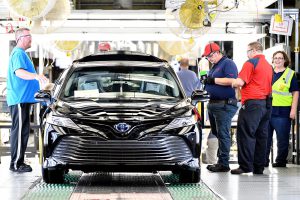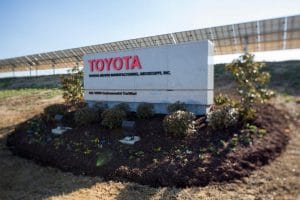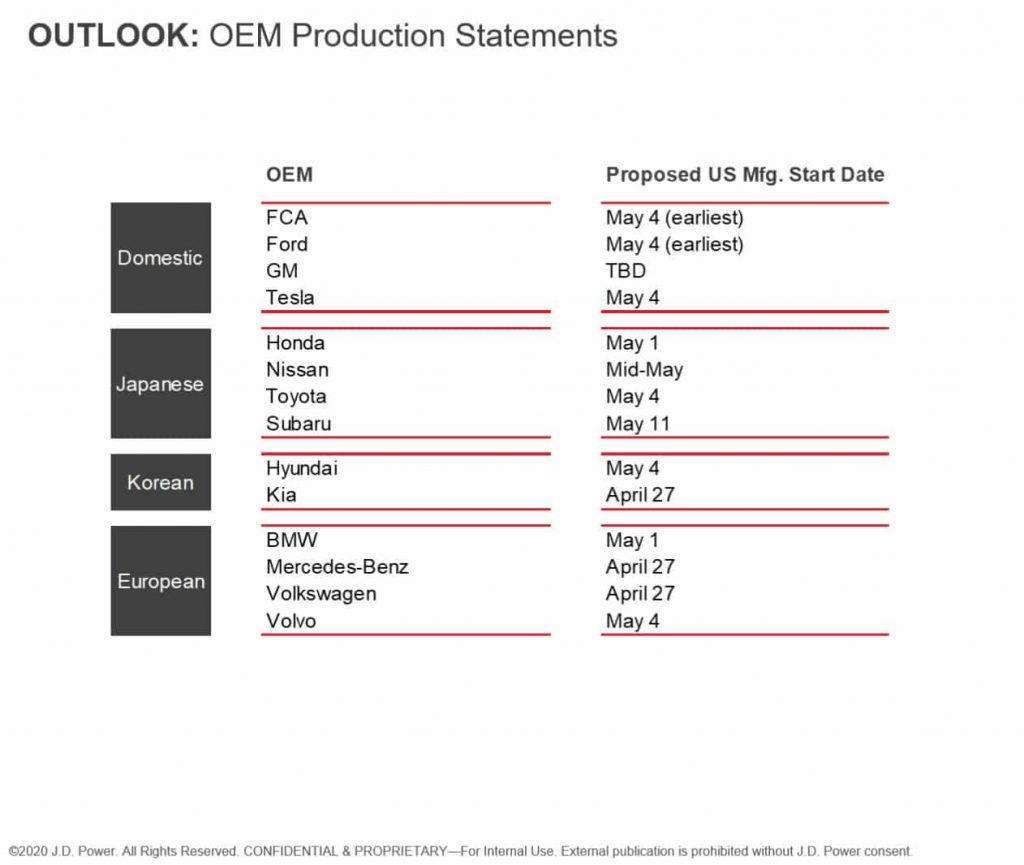
Going forward, Toyota workers will have to social distance from one another and will be adding masks and other protective equipment to reduce the risk of catching and spreading the coronavirus.
Toyota will begin the slow process of restarting U.S. manufacturing operations on May 4, the company confirmed, a process company officials stressed will focus first on creating “a safe environment for our workers,” and only then push to bring production back up to pre-pandemic levels.
Virtually the entire North American auto industry has been locked down since mid-March as the extent of the coronavirus outbreak in the U.S. became apparent. With a handful of exceptions, most manufacturers now are looking to resume operations in early to mid-May, but key to doing so will require extensive changes to the production process itself.
“There is no going back to the normal for the foreseeable future,” said Chris Reynolds, Toyota’s Chief Administrative Office for North American manufacturing operations. “We have to adjust to the new normal.”
(Ford, FCA and Toyota truck production could be delayed as supplier rebuilds plant.)
That new normal will become readily apparent to tens of thousands of Toyota’s U.S. plant workers when they start reporting back May 4. Revisions have been made on the assembly line to reduce the likelihood of them coming into contact with one another, explained Sean Suggs, president of Toyota’s big assembly plant in Mississippi. Cafeterias have been reshaped to allow for social distancing. Even in restrooms, Plexiglas shields have been put up between sinks.
Toyota’s plant workers already are getting a look at how things will change through regular company e-mails. The automaker is also checking in on their health status and even encouraging exercises designed to keep workers fit enough to resume jobs that can be physically demanding.
Once back on the job, they now will be required to wear masks and other protective gear that can include face shields where employees might need to come close to one another.
Toyota plans to stagger entry and exit times and every worker will have their temperature checked before entering a plant. For the most part they will be required to use stairs, rather than elevators, and every possible touchpoint, including stair railings, will be regularly sanitized, according to Reynolds, adding that the current plan is “flexible and agile,” meaning protocols very well could be changed on the fly if better processes become apparent.
“We’re deeply concerned, very concerned” by the fact that there are so many unknowns about the coronavirus, Reynolds acknowledged during a Wednesday morning media webinar. “We want to make sure we are doing everything we can,” he added, “to protect workers.”
(U.S. new car market showing signs of bouncing back to life.)
Toyota has so far learned that 24 of its U.S. employees have so far come down with COVID-19, the disease caused by the coronavirus. Of those, more than half have recovered already and there have been no deaths, said Suggs.
And the reality is that “There’s a really good chance we’ll have a positive case again,” he acknowledged.

While Toyota factories, like this one in Mississippi, will bring workers back on May 4, it could be days before the first vehicles begin to roll out again.
Wherever that worker might have gotten infected, it will require quick action to ensure other Toyota employees don’t pick up the virus.
While the first workers will be back at their plants on May 4, Reynolds said, “I would be surprised if a car rolls off a line anywhere” that day, and there may be few vehicles built that entire week. The automaker is prepared for an extremely slow ramp-up as the new manufacturing norm falls into place.
That shouldn’t be a problem, at least not initially, considering the sharp slump in U.S. new vehicle sales since early March. On Tuesday, J.D. Power reported that sales from April 1–19 were off about 45% from pre-pandemic forecasts. With rare exception, most U.S. dealers have plenty of vehicles in stock.
On the other hand, the downturn was actually less than many had feared, Power analysts warning last month that April sales could tumble by as much as 80%. So, production will have to start ramping up, especially on pickups and SUVs, said Reynolds, as motorists return to the market.
(Toyota product plans leak out.)
“The question is whether these new processes can meet the demand,” said Reynolds. Cautiously, he added, “We think they can.”

